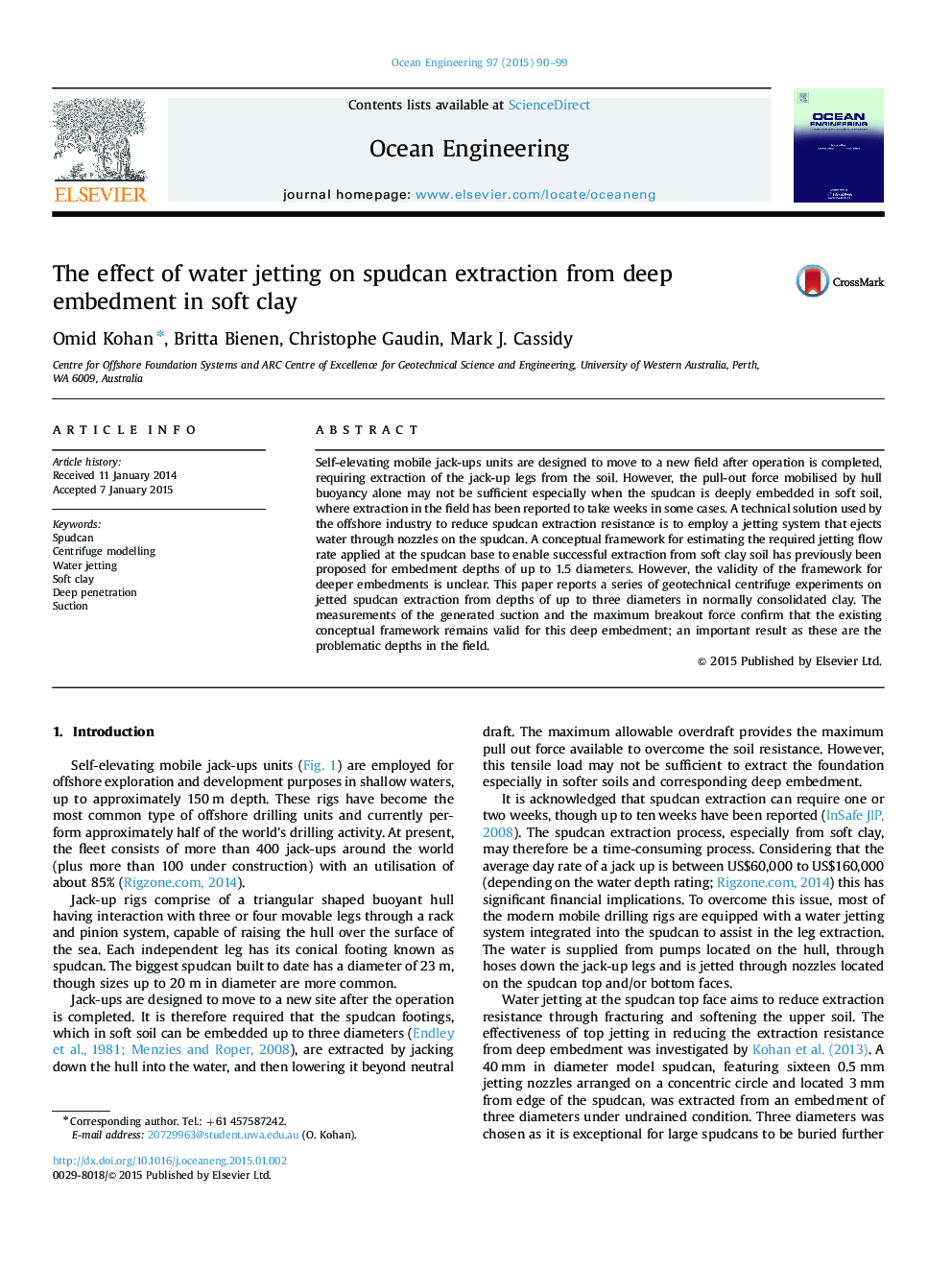| Article ID | Journal | Published Year | Pages | File Type |
|---|---|---|---|---|
| 8065536 | Ocean Engineering | 2015 | 10 Pages |
Abstract
Self-elevating mobile jack-ups units are designed to move to a new field after operation is completed, requiring extraction of the jack-up legs from the soil. However, the pull-out force mobilised by hull buoyancy alone may not be sufficient especially when the spudcan is deeply embedded in soft soil, where extraction in the field has been reported to take weeks in some cases. A technical solution used by the offshore industry to reduce spudcan extraction resistance is to employ a jetting system that ejects water through nozzles on the spudcan. A conceptual framework for estimating the required jetting flow rate applied at the spudcan base to enable successful extraction from soft clay soil has previously been proposed for embedment depths of up to 1.5 diameters. However, the validity of the framework for deeper embedments is unclear. This paper reports a series of geotechnical centrifuge experiments on jetted spudcan extraction from depths of up to three diameters in normally consolidated clay. The measurements of the generated suction and the maximum breakout force confirm that the existing conceptual framework remains valid for this deep embedment; an important result as these are the problematic depths in the field.
Related Topics
Physical Sciences and Engineering
Engineering
Ocean Engineering
Authors
Omid Kohan, Britta Bienen, Christophe Gaudin, Mark J. Cassidy,
